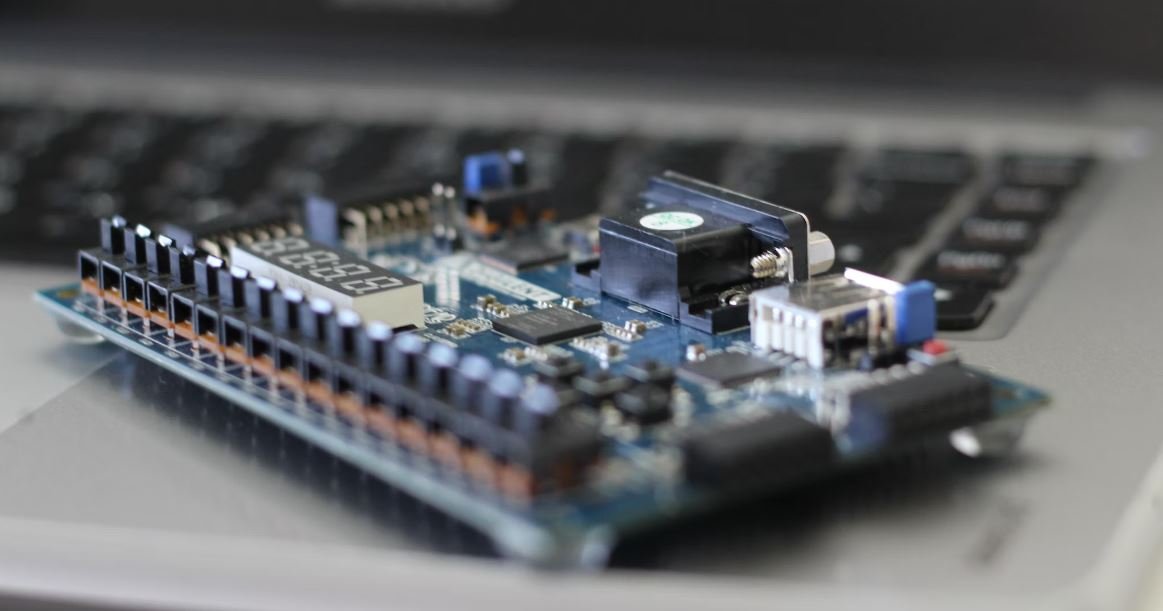Make Apps Invisible on Android
Do you have apps on your Android device that you want to keep hidden from prying eyes? Perhaps you have sensitive information stored in certain apps or want to maintain a clutter-free home screen. Whatever your reason may be, there are methods to make apps invisible on Android devices. In this article, we will explore different ways to hide apps and ensure your privacy is maintained.
Key Takeaways:
- You can make apps invisible on Android devices to protect your privacy.
- There are multiple methods available to hide apps, including using launchers, third-party apps, and native Android features.
- Remember to use secure methods for hiding sensitive apps and ensure you can easily access them when needed.
Using Launchers to Hide Apps
One way to make apps invisible on Android is by utilizing alternative launchers. These launchers offer customizability and options to hide apps from your home screen and app drawer. By assigning gestures or passwords to access hidden apps, you can maintain maximum privacy.
With a launcher like Nova Launcher, you can hide apps from your home screen or app drawer effortlessly.
Hiding Apps with Third-Party Apps
In addition to launchers, there are numerous third-party apps available on the Google Play Store that allow you to hide apps on your Android device. These apps often provide additional features like app locking, encryption, and secure folders.
Apps such as App Hider and Hide App – Hide Application Icon offer advanced functionality to keep your apps hidden and secure.
Native Android Features to Hide Apps
Android devices also offer native features to hide apps without the need for third-party apps. These features may vary depending on the Android version and device manufacturer. However, common methods include using the app drawer settings, app permissions, or app cloning.
Some Android devices come with a built-in “Secure Folder” feature that allows you to hide and protect apps with an additional layer of security.
Table 1: Popular Apps to Hide Apps on Android
| App Name | Price | Rating |
|---|---|---|
| Nova Launcher | Free/Premium | 4.5/5 |
| App Hider | Free/Premium | 4/5 |
| Hide App – Hide Application Icon | Free | 3.5/5 |
Securing Hidden Apps
While hiding apps on Android provides a level of privacy, it is important to ensure the security of these hidden apps. Use strong passwords or biometric authentication for added protection, and regularly update your device’s software to patch any potential vulnerabilities.
Remember, keeping your hidden apps secure is just as important as hiding them in the first place.
Table 2: Native Android Features for App Hiding
| Android Version | Feature |
|---|---|
| Android 9 (Pie) | App Drawer Settings |
| Android 10 | App Permissions |
| Samsung Devices with Secure Folder | Secure Folder |
Tips for Efficient App Hiding
- Organize your home screen and app drawer to minimize clutter.
- Use secure and reliable methods for hiding sensitive apps.
- Create strong passwords or use biometric authentication to protect hidden apps.
- Regularly update your Android device and installed apps.
Table 3: Pros and Cons of Different App Hiding Methods
| Method | Pros | Cons |
|---|---|---|
| Using Launchers | Customizability, easy to use | May require installation of a separate launcher |
| Third-Party Apps | Additional security features | Some apps may have ads or require a premium version for full functionality |
| Native Android Features | No additional app installation required | Feature availability varies based on device and Android version |
Ensuring Your Privacy
Now that you are aware of different methods to make apps invisible on Android, you can protect your privacy and keep your personal information secure. Experiment with different approaches and find the solution that works best for you.

Common Misconceptions
Misconception 1: Making Apps Invisible on Android is Impossible
One common misconception people have is that it is impossible to make apps invisible on Android devices. While it is true that Android does not have a built-in feature to hide apps, there are several methods and apps available that can help you achieve this.
- There are third-party apps available on the Play Store that can hide other apps from the app drawer and prevent them from appearing in the recent apps list.
- You can also create a separate profile on your Android device and install the apps you want to hide in that profile. This way, when you switch to your main profile, these apps will be invisible.
- Some custom Android launchers offer the option to hide apps. By using such launchers, you can customize your device’s home screen and hide specific apps from view.
Misconception 2: Hiding Apps Makes Them Completely Undetectable
Another misconception is that hiding apps on Android makes them completely undetectable to others. While it may be true that the apps are not visible in the app drawer or the home screen, they can still be found through other means.
- Apps that are hidden from the app drawer can still be found through the device’s system settings. By going to the Applications menu, users can view a list of all installed apps, including the ones that are hidden.
- Some apps that hide other apps may leave behind traces or icons that can still be visible to tech-savvy users.
- Apps that are hidden in a separate profile can still be accessed if someone knows how to switch to that profile or has the necessary credentials.
Misconception 3: Hiding Apps is Only for Unethical Purposes
There is a misconception that hiding apps on Android devices is only done for unethical or suspicious purposes. While it is true that some individuals may hide apps for malicious reasons, there are also valid and legitimate reasons why someone would want to hide certain apps.
- Privacy is a common reason for hiding apps. For example, someone may want to hide a messaging app to keep their conversations private from prying eyes.
- Parents may want to hide certain apps from their children to limit screen time or prevent access to inappropriate content.
- Some individuals may want to organize their home screen and reduce clutter by hiding rarely used apps.
Misconception 4: Hiding Apps Guarantees Security and Privacy
There is a misconception that hiding apps automatically guarantees security and privacy. While hiding apps can help in certain situations, it is not a foolproof method to ensure complete security and privacy.
- Hiding apps does not encrypt their data. If the app stores sensitive information without encryption, it can still be accessed if someone gains unauthorized access to the device or the app’s data.
- Some hiding methods can be bypassed by determined individuals who have technical knowledge or access to certain tools.
- If someone knows that certain apps are hidden, it may raise suspicion and lead to further investigation.
Misconception 5: Hiding Apps Requires Rooting the Android Device
One common misconception is that hiding apps on Android requires rooting the device. Rooting can provide more control and customization options, but it is not a prerequisite for hiding apps.
- As mentioned earlier, there are third-party apps and custom launchers available on the Play Store that can hide other apps without the need for rooting.
- Creating a separate profile can also hide apps without needing root access.
- Rooting an Android device can have potential risks and may void the warranty, so it is not recommended unless absolutely necessary.

Introduction
Smartphones have become an integral part of our lives, and numerous applications are available to enhance our daily experiences. However, sometimes we may want to keep certain apps hidden for various reasons. This article presents ten methods to make apps invisible on Android devices, ensuring that your personal information remains secure and your privacy intact.
Method 1: App Hiding Feature
Android devices often offer a built-in app hiding feature that allows you to conceal specific apps from your home screen and app drawer. By utilizing this feature, you can safeguard your sensitive apps from prying eyes.
Method 2: Third-Party Launcher
By using third-party launchers, such as Nova Launcher or Apex Launcher, you can customize your Android device’s interface to include an app hiding functionality. This enables you to create a discreet area on your device exclusively for hidden apps.
Method 3: App Lockers
App lockers provide an additional layer of protection by requiring a password, PIN, or fingerprint authentication to access specific apps. This ensures that even if someone gains access to your device, they won’t be able to open your hidden apps without authorization.
Method 4: Folder Concealing
Some Android launchers allow you to create hidden folders within your app drawer. You can easily hide apps by placing them inside these folders, making them virtually invisible to anyone casually browsing through your device.
Method 5: Inbuilt App Permissions
Android devices offer inbuilt app permissions, allowing you to control what information and features each app can access. By restricting certain permissions, you can limit an app’s capabilities and protect your privacy.
Method 6: Guest or Secondary User Profiles
Creating guest or secondary user profiles on your Android device ensures that your hidden apps are only accessible within your primary profile. This feature is particularly useful if you frequently share your device with others.
Method 7: Multiple User Switching
Some Android devices support multiple user switching, enabling you to create separate user accounts. By switching to a different user account, you can effectively hide your apps from prying eyes.
Method 8: App Drawer Customization
Certain Android launchers allow you to customize your app drawer, including hiding specific apps from view. This can be an efficient way to keep your apps out of sight while still having them easily accessible.
Method 9: Hidden File Managers
Utilizing hidden file managers allows you to store your apps in folders that are hidden from normal browsing. With these specific file managers, only those who know how to access them can view the hidden apps within.
Method 10: App Encryption
Some Android apps provide encryption features, ensuring that your hidden apps are password-protected and can only be accessed by individuals who know the encryption key. This provides an extra layer of security to keep your apps invisible.
In conclusion, keeping apps invisible on Android devices can be crucial for maintaining privacy and securing personal information. Whether you utilize built-in features, third-party launchers, or encryption, there are numerous methods available to ensure that your hidden apps remain truly hidden. Implementing one or more of these techniques will provide you with peace of mind and control over your app accessibility.
Make Apps Invisible on Android – Frequently Asked Questions
General Questions:
How can I make apps invisible on my Android device?
You can make apps invisible on your Android device by using certain third-party apps that provide this functionality. These apps hide the app icons and also allow you to set a password or a gesture to access them.
Is it legal to make apps invisible on Android?
Yes, it is legal to make apps invisible on Android as long as you are using legitimate methods and not engaging in any illegal activities. However, it’s important to respect the privacy and security of others and only use this feature for personal use and not for any malicious purposes.
Will making apps invisible affect their functionality?
No, making apps invisible will not affect their functionality. The apps will continue to work as usual, even though their icons are hidden. You can still launch them and use all their features, but they will not be visible on your home screen or app drawer.
App-Specific Questions:
Can I make specific apps invisible while keeping others visible?
Yes, you can choose to make specific apps invisible while keeping others visible. Most of the apps that provide this functionality allow you to select which apps you want to hide. You can customize the list of invisible apps according to your preferences.
How can I make social media apps invisible on my Android?
To make social media apps invisible on your Android, you can use app hider or app lock apps available on the Google Play Store. These apps will allow you to hide the icons of social media apps like Facebook, Instagram, Twitter, etc., and keep them securely hidden on your device.
Can I still receive notifications from invisible apps?
Yes, you can still receive notifications from invisible apps. Hiding the app icon does not affect the app’s ability to send you notifications. You will receive notifications as usual, and you can access the app by using the password or gesture set in the app hider or app lock app.
Security and Privacy Questions:
Is it safe to use app hider or app lock apps?
Most reputable app hider or app lock apps are safe to use. However, it’s important to download them from trusted sources like the Google Play Store. These apps often require certain permissions to function properly, so it’s essential to review and understand the permissions they request before granting them.
Can hidden apps still collect my data?
Hidden apps can still collect your data if you grant them the necessary permissions. When using app hider or app lock apps, it’s crucial to be mindful of the permissions you grant to the hidden apps. Make sure to review the permissions and only provide the ones necessary for the app’s legitimate functionality.
Will hiding apps protect my data from unauthorized access?
By hiding apps, you add an extra layer of security to your data. However, it’s important to note that hiding apps alone may not be enough to fully protect your data from unauthorized access. It is recommended to use additional security measures like strong passwords, device encryption, and regular security updates to ensure the safety of your data.





